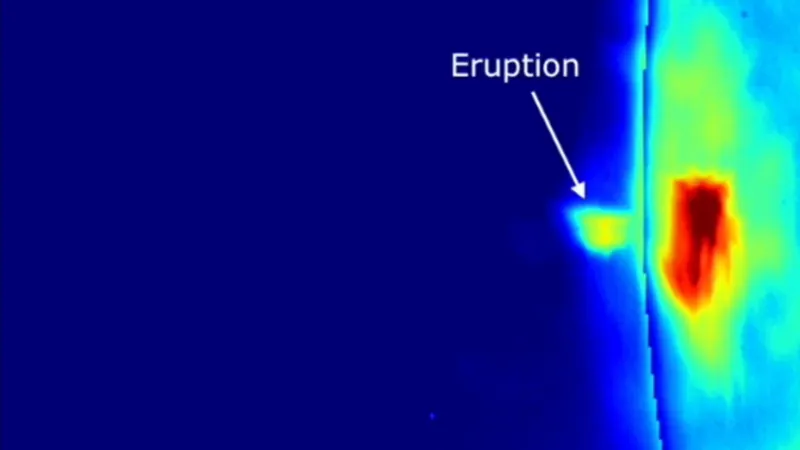
Unveiling Solar Secrets: ISRO's Aditya-L1 Captures Stunning Plasma Eruption!
2025-05-15
Author: Arjun
A Historic Solar Discovery!
Hold on to your solar hats! ISRO's groundbreaking Aditya-L1 mission has just unveiled a jaw-dropping solar eruption, featuring an explosive solar flare and a high-speed plasma ejection that will leave you in awe.
First-of-Its-Kind Observation
Utilizing its Solar Ultraviolet Imaging Telescope (SUIT), Aditya-L1 made this breathtaking observation on December 31, 2023, capturing the spectacle in near-ultraviolet light for the very first time. This unprecedented data offers scientists new insights into the Sun's violent behavior, helping them predict space weather events that could have significant impacts on Earth!
Solar Fury in Motion!
The event featured a powerful X-class solar flare and a coronal mass ejection (CME) from the active region NOAA 13536. Initially, the plasma blob was barreling through space at an astonishing speed of 300 kilometers per second. But then, it accelerated to a staggering 1,500 kilometers per second—fast enough to circle our home planet in under 30 seconds!
Breathtaking Footage and Key Insights
In the rare footage, the Sun's blinding brightness is toned down, revealing intricate structures and the rapid movement of plasma across SUIT's field of view. These solar flares are intense bursts of energy that can unleash radiation and charged particles into the universe, posing potential threats to satellites, radio communications, and even terrestrial power grids!
Why It Matters for Technology
Understanding solar flares is crucial for protecting our modern technology and infrastructure. While most studies focus on X-ray and extreme-ultraviolet wavelengths, SUIT's unique near-ultraviolet perspective sheds light on the Sun's lower atmospheric layers—the photosphere and chromosphere.
Advanced Tools for Major Discoveries
Equipped with 11 specialized filters, SUIT allows scientists to analyze energy propagation in the Sun’s atmosphere and see how these eruptions influence space weather. By integrating SUIT’s stunning ultraviolet imagery with international data from various observatories, researchers can trace the origins of solar flares and their widespread effects on Earth.
An Ideal Solar Watcher
Launched in September 2023, Aditya-L1 arrived at the Lagrange Point 1 in January 2024, placing it about 1.5 million kilometers from Earth in an ideal location for constant solar observation.
Keep Watching for More!
With findings published in The Astrophysical Journal Letters, the Aditya-L1 mission is set to revolutionize our understanding of solar dynamics and help protect our technological lifelines from the Sun's wrath. Stay tuned for more electrifying updates!

 Brasil (PT)
Brasil (PT)
 Canada (EN)
Canada (EN)
 Chile (ES)
Chile (ES)
 Česko (CS)
Česko (CS)
 대한민국 (KO)
대한민국 (KO)
 España (ES)
España (ES)
 France (FR)
France (FR)
 Hong Kong (EN)
Hong Kong (EN)
 Italia (IT)
Italia (IT)
 日本 (JA)
日本 (JA)
 Magyarország (HU)
Magyarország (HU)
 Norge (NO)
Norge (NO)
 Polska (PL)
Polska (PL)
 Schweiz (DE)
Schweiz (DE)
 Singapore (EN)
Singapore (EN)
 Sverige (SV)
Sverige (SV)
 Suomi (FI)
Suomi (FI)
 Türkiye (TR)
Türkiye (TR)
 الإمارات العربية المتحدة (AR)
الإمارات العربية المتحدة (AR)